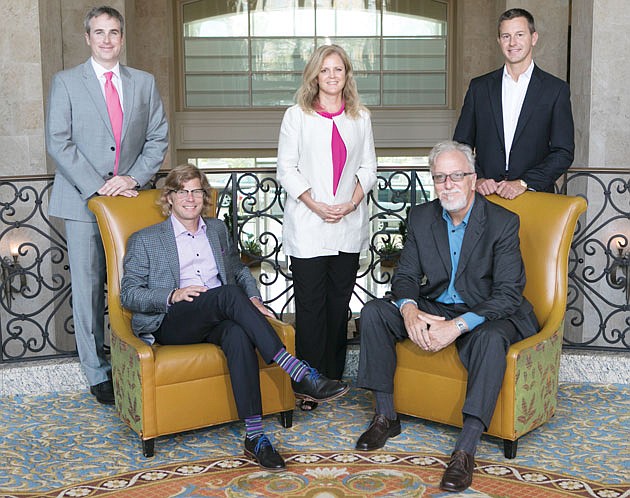- July 26, 2024
-
-
Loading

Loading

There hasn't been a lot to celebrate this commercial real estate cycle when it comes to retail as an investment class.
Industry stalwarts such as Macy's, Sears, Sports Authority and J.C. Penney, to name but a few, have been shuttering stores nationwide and throughout the Gulf Coast of Florida.
At the same time, e-commerce platforms like Amazon have gained traction with consumers by offering unprecedented convenience and selection online.
But experts at a recent Florida Urban Land Institute conference, held in Tampa, contend the sector remains ripe with opportunity for creative landlords and investors willing to embrace experiential shopping and new formats.
“Retail is not dead, even though many department stores continue to struggle,” says Jamey Flegal, a development partner in the Hutton Cos., a Tennessee-based developer that has built several projects in Florida. “But the opportunities are still out there.”
To succeed, investors and developers will have to differentiate themselves by pushing experience-based shopping, value and a heightened level of services.
“The experience is going to be vital to the future of most retail,” says Tom Henken, a vice president and director of design at api (+), a Tampa design firm that specializes in retail and helped revamp the Sundial project in St. Petersburg. “Experience will give retail developments longevity throughout the world.”
To that end, many developers and retailers are turning to new concepts, such as food halls that combine dining and the experience of tasting new foods; injecting education into centers in the form of cooking classes or brewing demonstrations; and experimenting with augmented or virtual reality technology to enhance consumer options.
Landlords — especially owners of Class B malls — are increasingly seeking out non-traditional tenants — including churches, data centers, medical providers, auto dealerships and fitness centers — to revitalize their projects and fill space abandoned by fashion-centric merchants.
“As the retail industry changes, diversification is a good thing,” says Ryan Kratz, president of commercial real estate services firm Colliers International Florida.
“If you have a church, a call center or a medical use in your property, that creates a diversified income stream and your property is a little more secure because of that.”
Henken maintains that many retail projects will need to evolve into “multiuse centers” that combine shopping with activities and operate both day and night to drive traffic. At Sundial, for instance, yoga classes are held in a common area when stores are closed.
Other projects may want to consider installing sports-related activities, small “pocket” parks, lifestyle experiences or “stores within stores” alongside retail offerings to boost consumer interest.
“There's going to be a real blurring of the lines,” Henken says. “But that will drive loyalty with shoppers. That's why I think we're about to be inundated with food halls. They're part fast-casual dining, part market, they offer a variety and they're a really fun experience. They hit all the senses, and that's part of what a great experience is.”
Nowhere will the changes be more evident than in grocery and restaurants, a sector already adapting to changing tastes with new offerings and physical layouts.
“I think you're going to see grocery store interiors evolve to have more sit down offerings and prepared foods,” Kratz says.
Restaurants, too, will likely have to adopt multiple platforms to accommodate customers who want a full-service, sit down experience and those who desire more casual dining.
And while e-commerce has gained market share in recent years and showing few signs of waning — Colliers International projects it will capture 14% of all sales in the U.S. by 2022, up from 10% this year — landlords who view their properties as distribution points on an expanded supply chain will succeed, despite a tougher sales environment and a perceived over-supply in some areas, like restaurants.
Many discounters, such as Ross, Marshall's and T.J.Maxx, are already adapting, by shrinking the sizes of stores — especially stock rooms — to allow inventory to circulate faster from warehouse to consumer, Flegal says.
Still, vacancies have not ballooned along the Gulf Coast, despite the onslaught of online shopping and increased offerings. In the Tampa area, for example, retail vacancy rates are around 6%, Kratz says, while in some wealthier areas, like Naples, vacancy rates have dropped to as low as 2%, even as rental rates have spiked.
“We're seeing all-time highs for rents in areas like Naples, of $50 or even $60 per square foot,” Kratz says. “Premium retail spaces and areas are commanding premium rents. By almost any measure this is a very healthy market.”
But that doesn't mean the cyclical forces that influence all commercial real estate aren't pressuring retail centers, which many analysts believe hit peak value for this cycle in the second half of 2015.
“Buyers, consumers, still want to shop,” Kratz says. “But now is not the time to overpay for a retail property. Buyers are feeling some trepidation.”
(This story was updated to reflect the correct name of api (+))